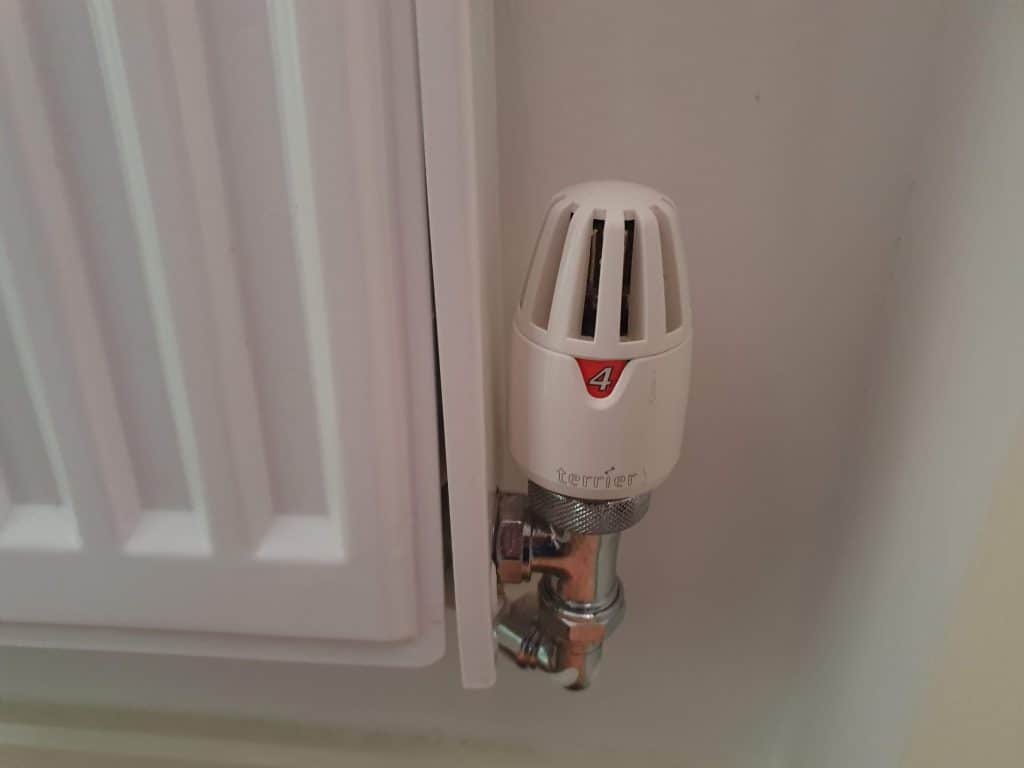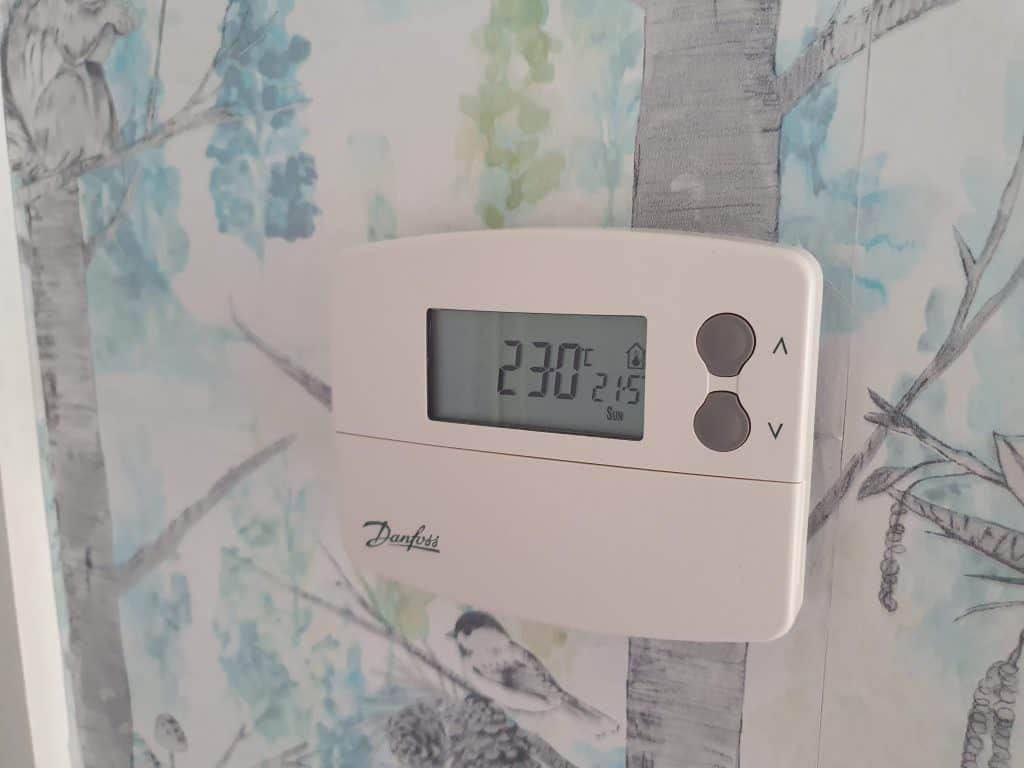In today’s world, many household devices are becoming smarter and smarter, however, there are many devices that are still flawed in how they work. Let’s take the smart thermostat as an example.
These thermostats offer a wide range of advantages but despite their merits, they have some obvious limitations, such as their inability to allow room-by-room temperature control.
So, could smart radiator valves actually be the answer to the limited control problems that smart thermostats have? Are smart radiator valves actually worth buying?
This article should answer those types of questions, and many more, so stick around to find out more about smart radiator valves, how they work, and whether they’re a worthy investment for you.
How Does a Regular Radiator Valve Work?

In other words, to keep the whole system running smoothly, you’ll need to keep the radiator operating at all times, and you can see the problem right here.
A radiator requires a lot of electricity, so keeping the device on for a lot of time can become costly very quickly and increase the household carbon footprint, which is bad for the environment.
The only control you have in non-smart radiators is through thermostatic radiator valves, which control the valve based on a numbered frequency setting.
The higher the number you choose on the valve, the more frequently the valve will allow water into the radiator, regardless of the ambient temperature.
What Does a Smart Radiator Valve Have to Offer?

Now that you have a better understanding of standard thermostatic radiator valves, here’s how a smart radiator valve does things differently.
Unlike old-school radiator valves that are On all the time, these valves are designed to allow the radiator to go On and Off depending on a variety of factors.
The most common of these factors is ambient temperature. These thermostat radiator valves can be set to only turn the radiator on when the temperature falls below a certain point, as these valves are equipped with temperature sensors that will only turn the radiator on when the ambient temperature falls below the threshold temperature you set.
What Are the Advantages of Smart Radiator Valves?
Now that you know more about smart radiator valves and how they work when compared to non-smart options, let’s have a quick look at some of the extra benefits you’ll enjoy by installing these smart devices in your home:
1. They Control the Room’s Temperature Individually
The first and most important aspect that makes a smart radiator a great product is the ability to control each room individually, which is a feature missing if you’re using a standard radiator valve that controls the entire house as one unit.
2. Smart Devices Are Much Easier to Optimize
A smart device nowadays will always come with an app that allows you to control your device remotely.
In the case of a smart radiator, these apps will allow you to control the valve with a click of a button or even through speech, which allows the temperature of a room to be adjusted on demand!
3. They Can Save You Money in the Long Run
Although they cost more initially, these radiator valves have the capacity to save you a lot of money in the long run.
This is because it can work room-by-room, so if you have one or more rooms that don’t require heating, you can simply avoid them so that no electricity is wasted and your heating bills will be reduced to a minimum.
4. They’re the Best for the Environment
Since the device is controlled by temperature rather than being always on or controlled by a timer, it’ll only operate when the need calls for it, which reduces the impact of radiators on the environment.
5. You Can Integrate Them with Other Smart Temperature Control Systems
Many of the previous features can be done with a TRV. However, integration with smart thermostats takes the heating features to a next level.
By pairing the two devices together, you’ll fine-tune the temperature control in each room individually and even set the heating to go as you approach your home to save as much energy as possible.
What Are the Limitations of Smart Radiator Valves?

As you can see, smart radiator valves come with some critical benefits that make them brilliant, but they’re also far from perfect. In this section, we’ll talk about some of the drawbacks of a smart radiator valve:
1. They Need a Source of Power to Do Their Job
Smart radiator valves are powered by batteries. This adds another item to the list of things that will need a battery replacement around the house, as they turn to a non-smart valve as soon as they run out of juice.
2. They Have a Higher Upfront Cost
While a standard radiator can cost less than $10 to install, some of the smart radiator valves can easily cost you upwards of $50 or more, although the higher price can pay off in the long run.
3. Not All Smart Radiators Are Compatible with Smart Thermostats
To make the most out of the smart features of a radiator, you have to pair them with a suitable smart thermostat system.
Unfortunately, not all systems are compatible, so you’re stuck with what is compatible with what you have.
For example, Nest and Ecobee thermostats are not directly pairable with smart radiator valves, so your best option is to have a smart hub and connect all devices to it.
On the other hand, Hive smart valves can be connected with Hive Thermostat, which allows you to extend the features of the valve and control rooms individually.
4. Regular TRVs Can Do Quite a Similar Job in Some Cases
Lastly, the main limitation of smart radiator valves isn’t actually due to their drawbacks, but because a thermostat radiator valve can do quite a similar job without costing so much more or requiring a compatible thermostat.
The settings on TRVs are designed to let the radiator on when temperatures are below preset points, which vary from 50 to 70 degrees F (10 to 22 degrees C).
If you adjust the valve of each room separately to the desired threshold point, you’ll enjoy much of the smart valve benefits without having one, but of course, you’ll still miss out on some of the extended controllability features.
This includes the ability to optimize the temperature thresholds based on your requirements rather than presets, the ability to control your valve via apps, and the ability to pair them with your smart thermostats.
Are Smart Radiator Valves Worth Buying?
With everything said in mind, the answer to this question mainly relies on your case and depending on your needs.
There are plenty of good smart radiator valves on the market. However, you should know that not all options out there are compatible with popular smart thermostat options like Ecobee and Nest thermostats.
If you’re looking for long-term cost efficiency as well as energy-saving, having smart radiators will be a very good investment, especially if you already have a compatible thermostat or a smart home hub and you don’t mind the initial costs.
Additionally, they’re a great option if each room in your house can fluctuate greatly in temperature and you want to have better room-by-room control.
However, if you already have multiple TRVs installed and you’re already satisfied with their performance, especially if you don’t have compatible smart thermostats, then you may not need smart radiators at the moment.
Final Words
There you have it! A brief guide that walks you through smart radiators and whether they’re good for your home.
As you can see, the value of smart radiators depends mainly on your requirements and whether you have a compatible smart thermostat to fully benefit from the smart radiator valve’s features.
